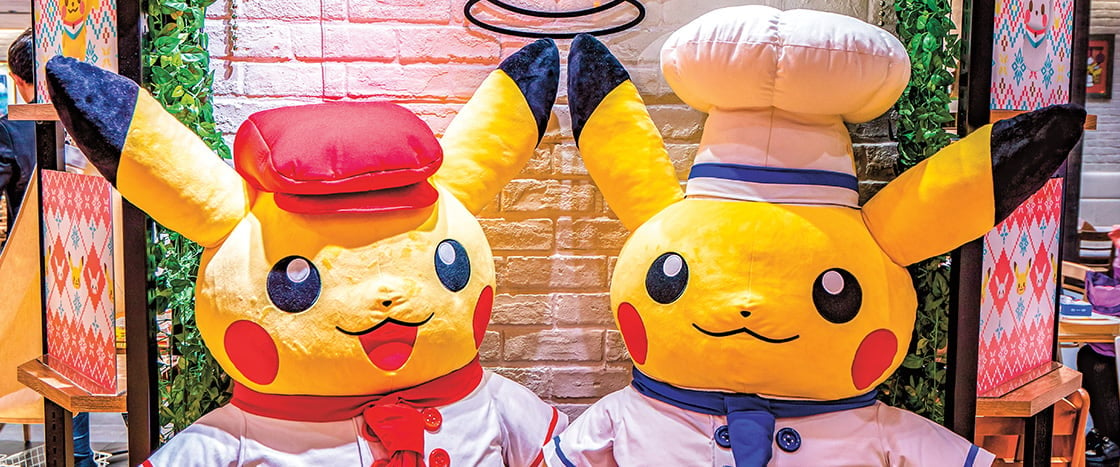Jim McMahon/Mapman ®
The café is in Japan.
Do you love Pokémon? Would you like to eat at a Pokémon restaurant? You can do that in Japan. Japan is a country in Asia. Pokémon was invented there.

Pack your bags! It’s time for a trip to an amazing restaurant in Japan.
Jim McMahon/Mapman ®
The café is in Japan.
Do you love Pokémon? Would you like to eat at a Pokémon restaurant? You can do that in Japan. Japan is a country in Asia. Pokémon was invented there.
Shutterstock.com
Entrance To The Café
Pokémon Sushi
The Pokémon Company
sushi
The menu has a lot of tasty dishes. One dish is sushi. It is shaped like Pokémon characters.
Sushi is a food from Japan.
It is made of rice and seaweed. Sometimes it has vegetables and fish in it. Yum!
Pikachu Hamburger
The Pokémon Company
hamburger
You can also get a hamburger that looks like Pikachu. It comes with a french fry shaped like a lightning bolt. That’s because Pikachu can shoot lightning out of his tail. Zap!
There are also Pokémon drinks, Pokémon desserts, and more!
More About the Article
Social Studies Focus
Culture
Vocabulary
sushi, seaweed
Essential Question
The big question of this issue of Storyworks 2 is, what can we learn from the foods we eat?
1. BEFORE READING
Show “The Big Question” Video (10 minutes)
Preview Vocabulary (5 minutes)
Text Preview Bookmarks (5-10 minutes)
2. READ THE ARTICLE (10 minutes)
3. AFTER READING: FOCUS ON ELA SKILLS
Pick and choose from a variety of activities:
ELA Focus: Quiz (10 minutes)
ELA Focus: Write Key Details to Nosey at [email protected] (20 minutes)
ELA Focus: Parts of Speech (15 minutes)
Enrich the Learning: Paired Text Opportunities (time amount varies)
Independent Learning: Whole Issue Scavenger Hunt (15 minutes)